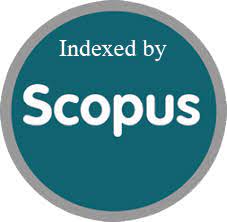Effectiveness Of Using Story Map Technique On Level Of Comprehension Skill Among School Going Students
DOI:
https://doi.org/10.63682/jns.v14i31S.7095Keywords:
Comprehension Skill, Story map technique, School going studentsAbstract
Material and Method-A Nearly exploratory study utilizing a Pre test Post test research methodology was carried out with sixty enrolled students to look into the impact of the Story Map Technique on comprehension ability lebel in a particular school in Odisha.samples that fit the requirements for inclusion are devided into two groups-Thirty for experimental group and thirty for control group.A standardized narrative map questionnaire and a self-structured sociodemographic performance instrument were utilized to gather sociodemographic data and gauge understanding ability.
Result & Conclusion- The descriptive & inferential statics used for this study resulted disparity between the comprehension skill levels before and after the test after giving story map technique as evidenced by t Test value at p=0.000 which is extremely significant.it is implied that the comprehension skills varied considerably l level after giving story map technique to the school going students.
Downloads
Metrics
References
Paye, M. (2013). Discursive formations of UNESCO's policies on literacy. Indiana University of Pennsylvania.
Barro, R. J., & Lee, J. W. (1993). International comparisons of educational attainment. Journal of monetary economics, 32(3), 363-394.
Altbach, P. G., Reisberg, L., & Rumbley, L. E. (2019). Trends in global higher education: Tracking an academic revolution (Vol. 22). Brill.
Irwin, V., Zhang, J., Wang, X., Hein, S., Wang, K., Roberts, A., ... & Purcell, S. (2021). Report on the Condition of Education 2021. NCES 2021-144. National Center for Education Statistics.
Hirsch, E. D. (2003). Reading comprehension requires knowledge of words and the world. American educator, 27(1), 10-13.
Marzano, R. J. (2004). Building background knowledge for academic achievement: Research on what works in schools. Ascd.
Reardon, S. F., Valentino, R. A., & Shores, K. A. (2012). Patterns of literacy among US students. The future of Children, 17-37.
Vaughn, S., Wexler, J., Leroux, A., Roberts, G., Denton, C., Barth, A., & Fletcher, J. (2012). Effects of intensive reading intervention for eighth-grade students with persistently inadequate response to intervention. Journal of Learning Disabilities, 45(6), 515-525.
SULTAN, D. A., & FATIMA, D. N. (2025). ATTENTION MODULATION IN READING.
Millah, R. (2018). Utilizing Story Mapping Strategy to Improve Students' Reading Comprehension in Finding Main Idea. NOBEL: Journal of Literature and Language Teaching, 9(1), 57-72.
Nair, P., & Said, N. E. M. (2020). The effect of graphic organizer (KWL chart) on young learners’ reading comprehension in an ESL setting. International Journal of Management and Humanities, 4(8), 43-53.
Harvey, S., & Goudvis, A. (2007). Strategies that work: Teaching comprehension for understanding and engagement. Stenhouse publishers.
Rai, G. (2018). A Study to Assess the Effectiveness of Self Instructional Module on Knowledge Regarding Early Signs and Management of Visual Impairment in Children Among Teachers in Selected Primary Schools of Rural Community, Bengaluru (Master's thesis, Rajiv Gandhi University of Health Sciences (India)).
Cooper, K. A. (2023). Teacher Perceptions of Reading Aloud Informational Text to K-2 Students. Lincoln Memorial University.
Iuliano, E., di Cagno, A., Aquino, G., Fiorilli, G., Mignogna, P., Calcagno, G., & Di Costanzo, A. (2015). Effects of different types of physical activity on the cognitive functions and attention in older people: A randomized controlled study. Experimental gerontology, 70, 105-110.
Biswas, R. C., & Shil, R. (2023). Multimedia education program on knowledge and attitude regarding management, prevention of complication and side-effects of drugs on hepatitis-B among hepatitis patients: a pre-experimental study. International Journal of Community Medicine and Public Health, 10(11), 4321.
Burger, J. A. (2010). Story Mapping Used to Support Struggling Readers and Writers with Behavioral Concerns.
Mo, F., Tarkhani, Z., & Haddadi, H. (2024). Machine learning with confidential computing: A systematization of knowledge. ACM computing surveys, 56(11), 1-40.
Kumar, N. (2019). Public Schools Can Improve Student Outcomes: Evidence from a Natural Experiment in India (No. pku634). Job Market Papers.
Groenendijk, T., Janssen, T., Rijlaarsdam, G., & van den Bergh, H. (2013). Learning to be creative. The effects of observational learning on students' design products and processes. Learning and instruction, 28, 35-47.
Downloads
Published
How to Cite
Issue
Section
License

This work is licensed under a Creative Commons Attribution 4.0 International License.
You are free to:
- Share — copy and redistribute the material in any medium or format
- Adapt — remix, transform, and build upon the material for any purpose, even commercially.
Terms:
- Attribution — You must give appropriate credit, provide a link to the license, and indicate if changes were made. You may do so in any reasonable manner, but not in any way that suggests the licensor endorses you or your use.
- No additional restrictions — You may not apply legal terms or technological measures that legally restrict others from doing anything the license permits.










